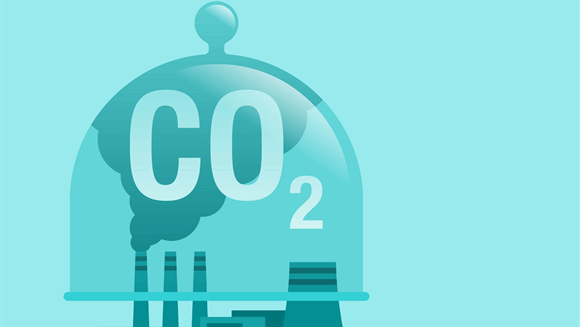Hoegh LNG AS and Aker BP ASA have entered into a strategic partnership to develop a comprehensive carbon transport and storage (CCS) offering for industrial carbon dioxide (CO2) emitters in Northern Europe, with the aim of developing maritime transport solutions and greenhouse gas injection.
Hoegh LNG said in a press release that the deal “combines the companies’ respective strengths, experience and technologies to establish a strong value chain for CCS on the Norwegian continental shelf.” CCS initiatives include the collection, transport and safe injection of carbon dioxide for permanent storage in subsea reservoirs, Hoegh LNG said.
“Hoegh LNG welcomes the opportunity to join forces with Aker BP and deliver a large-scale, one-stop CCS value chain to industrial emitters by 2030. Together we will deliver market-leading solutions for low-cost decarbonisation unit cost, contributing to the energy transition in Europe,” said Hoegh LNG CEO Erik Nyheim.
“We expect CCS to play a key role in the transition to a low-carbon energy future. This partnership reflects our ambition to advance CCS solutions by combining Aker BP’s strengths in subsurface understanding and development of large-scale projects with Hoegh LNG’s technical expertise in the LNG sector,” said Karl Johnny Hersvik, CEO of Aker BP.
Hoegh LNG aims to further develop its concept of floating carbon dioxide storage units (FCSOs) enabling the purification and aggregation of carbon dioxide from multiple emitters in key export hubs. The units will enable cost-effective solutions for smaller issuers that might not otherwise be able to develop solutions on their own, the company said.
Liquefied CO2 will be transported by low-pressure tankers, resulting in greater transport capacity and a lower unit cost of CO2 due to scale. Aker BP will lead the development of offshore injection facilities and identify suitable subsea reservoirs for carbon dioxide storage, the statement said.
In addition, Hoegh LNG and Aker BP will work together to unlock potential new business opportunities for transport and storage solutions on the Norwegian Continental Shelf for carbon dioxide captured from industrial emitters in northwest Europe, the statement said.
Meanwhile, Hoegh LNG Holdings Ltd. and its subsidiaries reported total revenue of $126.8 million and EBITDA of $78.7 million for the second quarter, compared to $137.4 million and $91.9 million, respectively, from the previous quarter, according to a previous press release.
The decrease in EBITDA of $13.2 million was primarily the result of its Hoegh Giant LNG being idle for most of the second quarter, partially offset by Hoegh Gandria, which was acquired in late first quarter, starting a one-year LNG carrier. time charter since the end of April, the company said.
Hoegh LNG said its fleet delivered stable operational performance in the second quarter and that, while Hoegh Giant was idle for most of the quarter, it was repositioning to begin operations at the regasification unit d floating storage (FSRU) under its long-term contract in Brazil in the third quarter. Hoegh Gannet is currently carrying out its commissioning work in Germany before entering regular commercial regasification operations. Working on a long-term charter with TotalEnergies SE, Cape Ann has left the yard after completing modifications and refit of the class and is currently repositioning for FSRU operations in France later this year, according to the statement.
Commenting on the market, Hoegh LNG said: “The global LNG and gas markets have been quieter in the second quarter of 2023 relative to the situation seen in 2022, albeit at levels that remain high compared to historical averages .Natural gas storage in Europe has been building, reaching milestone levels considerably earlier than required by the EU [European Union], helped by relatively muted demand in both Europe and Asia. While this in itself has eased markets, it remains the case that Europe is now much more dependent on LNG imports than it was before Russian pipeline imports collapsed. Natural gas and LNG futures indicate that global gas markets will tighten considerably towards the end of the year, reflecting the risk that the coming winter could turn out to be colder than the past. Long-term LNG market growth has gained further support as several upstream liquefaction projects progress, notably in the US, while Vietnam, the Philippines and Hong Kong commission their first LNG import terminals.”
To contact the author, send an email to rteodoro.editor@outlook.com


